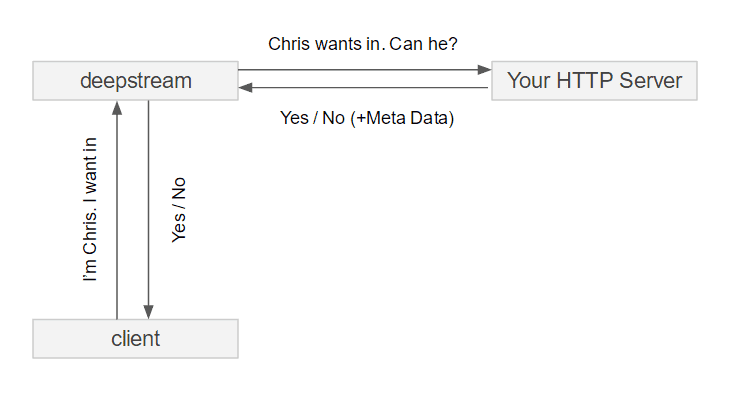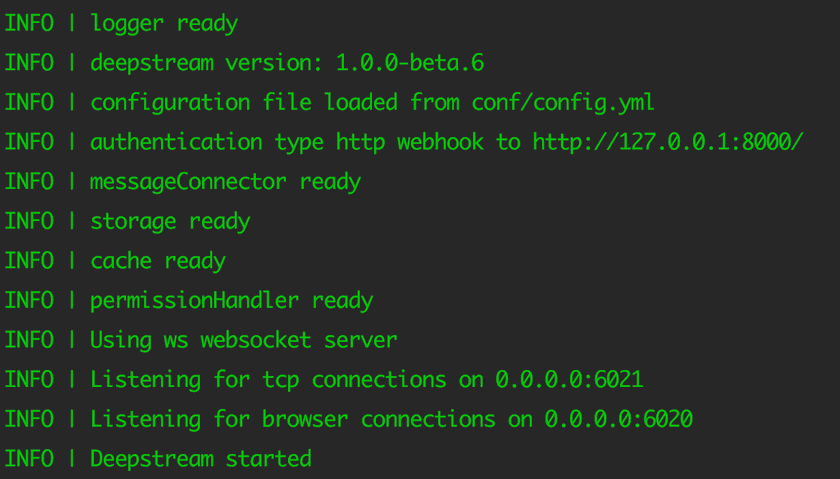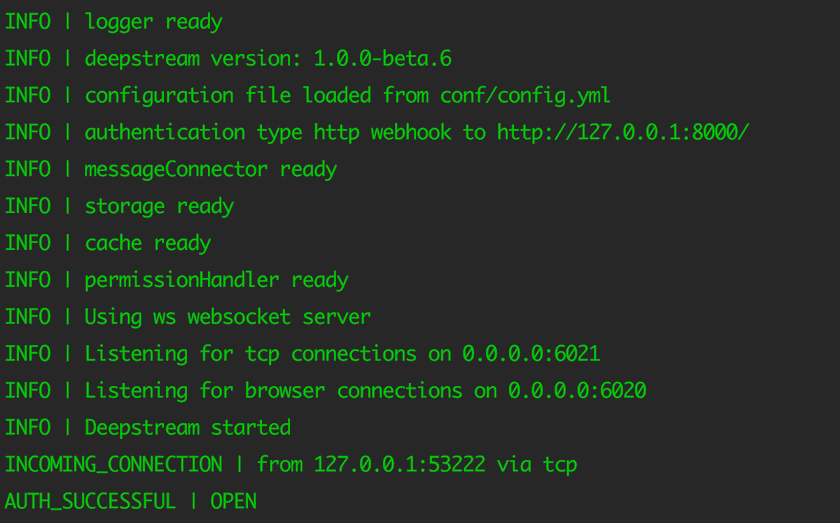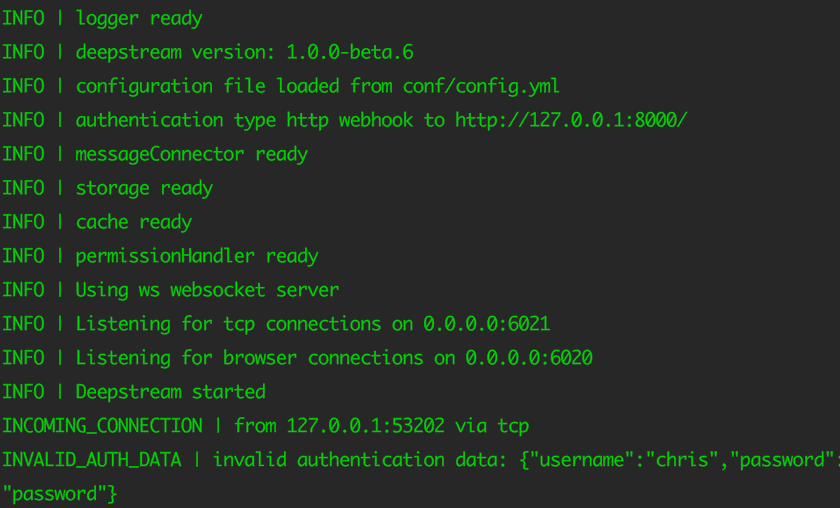HTTP Authentication
How to register your own HTTP server as a Webhook for user authentication
Http authentication lets you register your own HTTP server’s URL as a Webhook. Every time a user tries to login, deepstream will send their credentials via POST request to your server. Depending on your server’s response, the user’s login will be denied or granted.
Http authentication is the most flexible authentication type as it’s completely up to your server to implement an authentication mechanism. You can query a database, contact an oAuth provider, validate a WebToken or whatever else your heart desires.
Using HTTP Authentication
To enable HTTP authentication, set the type to http in the auth section of the server’s configuration file.
- type: http
options:
endpointUrl: https://someurl.com/auth-user
permittedStatusCodes: [ 200 ]
requestTimeout: 2000
retryStatusCodes: [ 404, 504 ]
retryAttempts: 3
retryInterval: 5000
reportInvalidParameters: true # return when credentials are incorrect: missing username or passwordIn the options key, set an endpointUrl for an authentication service that deepstream will send a POST request to, permittedStatusCodes to the list of accepted http codes for successful authentication, and requestTimeoutis the timeout value (in milliseconds).
[[important]] | Unless your deepstream and authentication servers are within the same private network, you should use a secure connection (https).
The following payload is sent with the POST request for your authentication service to work with.
{
"connectionData": {...},
"authData": {...}
}How you construct the service behind the url endpoint is up to you and your application stack, but it should return the relevant http response code and either a username string, or a JSON:
{
"id":"chris",
"clientData": {},
"serverData": {}
}The content of clientData and serverData are up to you, but useful for sending data back to deepstream, with clientData available in the client.login() callback and serverData sent to the permissions handler.
Start the deepstream server and you should see the authentication type confirmed.
This simple node server returns an http code of ‘200’ when a certain username is passed, and ‘404’ if it’s any other username:
const express = require('express')
const bodyParser = require('body-parser')
const app = express()
app.use(bodyParser.json())
app.post('/auth-user', (req, res) => {
if (req.body.authData.username === 'chris') {
res.json({
id: 'chris',
clientData: { themeColor: 'pink' },
serverData: { role: 'admin' }
})
} else {
res.status(403).send('Invalid Credentials')
}
})
app.listen(3000)In your application code you can now connect to the deepstream server and try to login a user. Try changing the value of username to something aside from ‘chris’ to see what happens.
// ES5
const { DeepstreamClient } = require('@deepstream/client')
const client = new DeepstreamClient('localhost:6020');
client.login({
username: 'chris',
password: 'password' // NEEDS TO BE REAL
}, (success, clientData) => {
if (success) {
// Do stuff now your authenticated
} else {
// Unhappy path of an unsuccesful login
}
})import deepstream from '@deepstream/client'
const client = new DeepstreamClient('localhost:6020')
try {
const clientData = await client.login({
username: 'chris',
password: 'password' // NEEDS TO BE REAL
})
// Do stuff now your authenticated
} catch (error) {
// Unhappy path of an unsuccesful login
}If a success, the deepstream console will show:
And if a failure:



